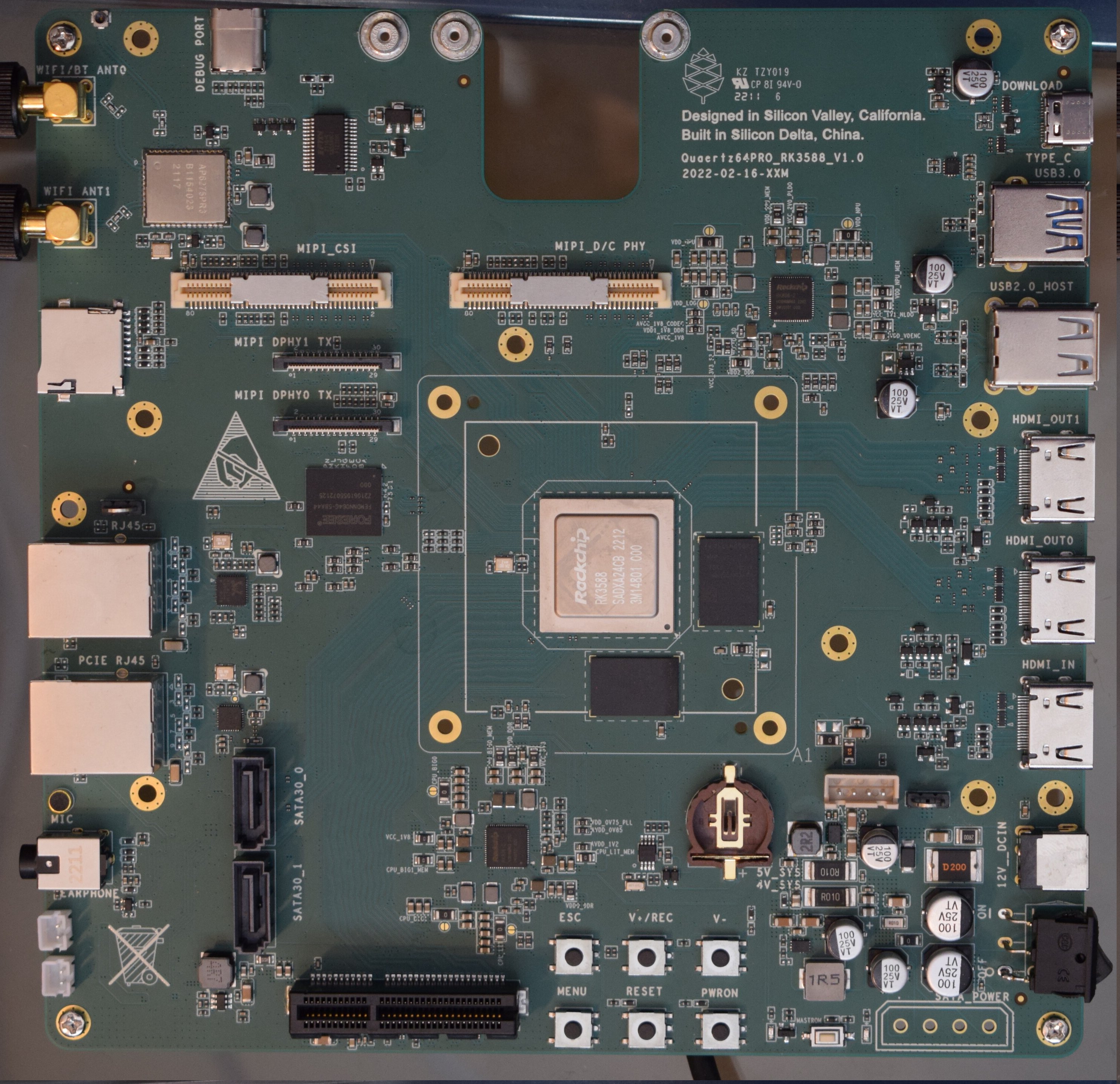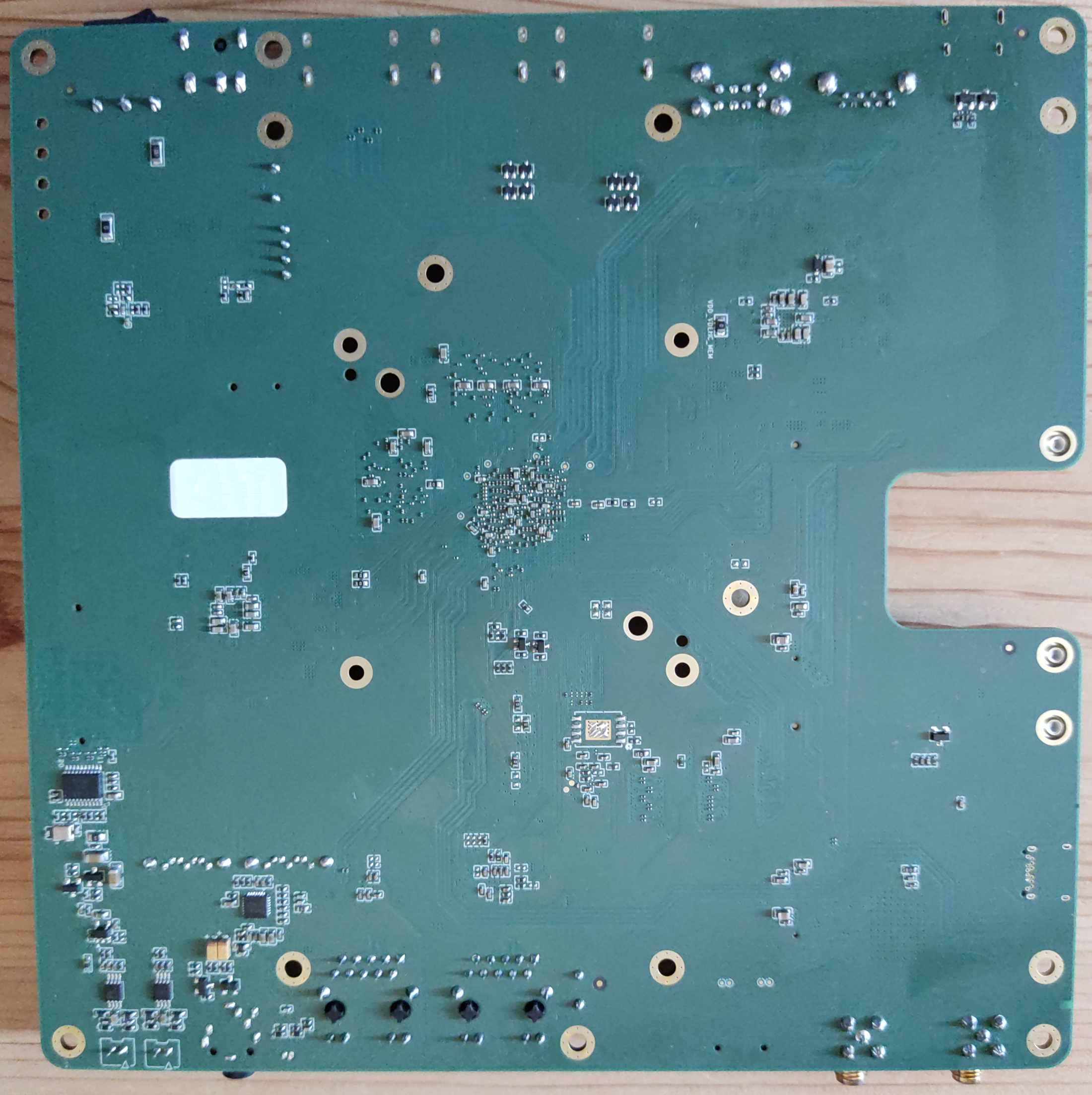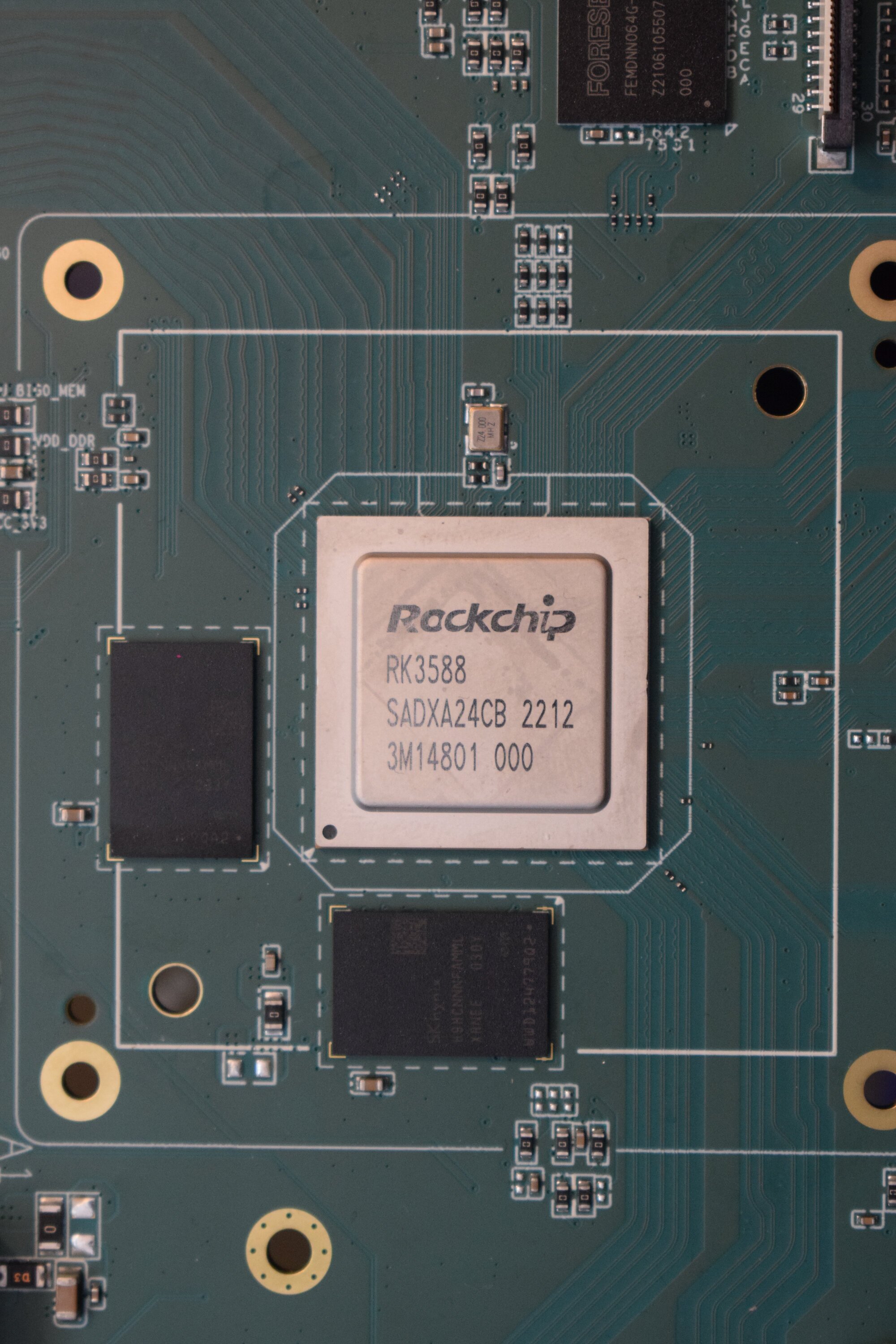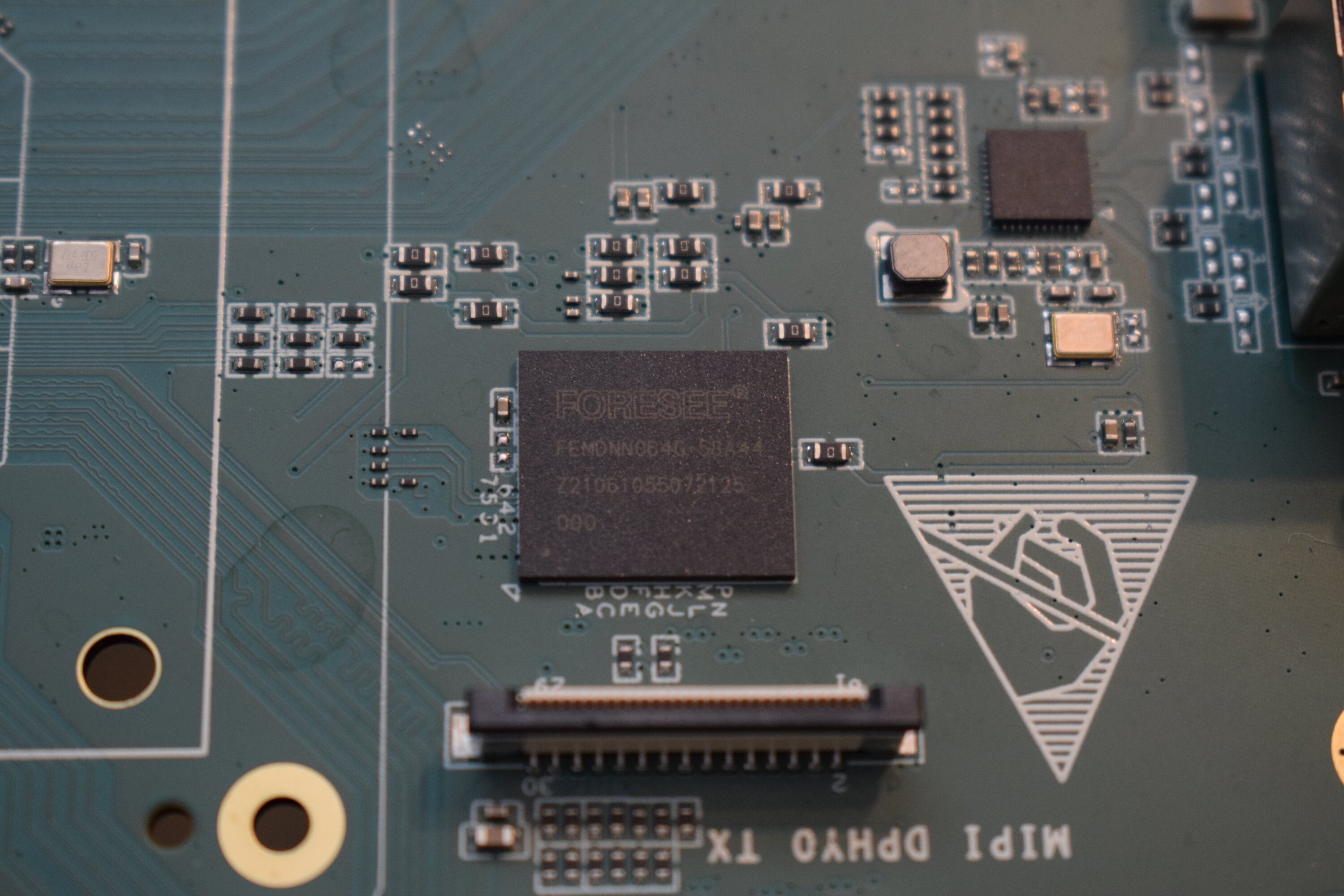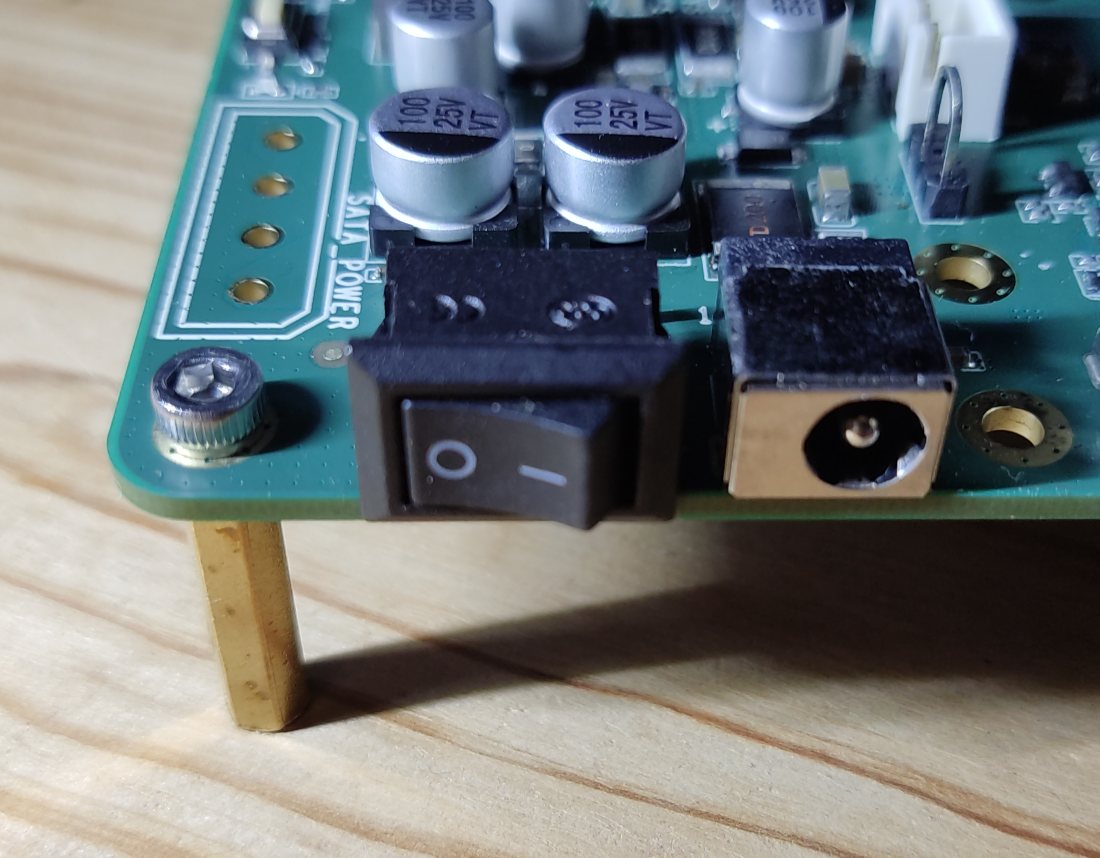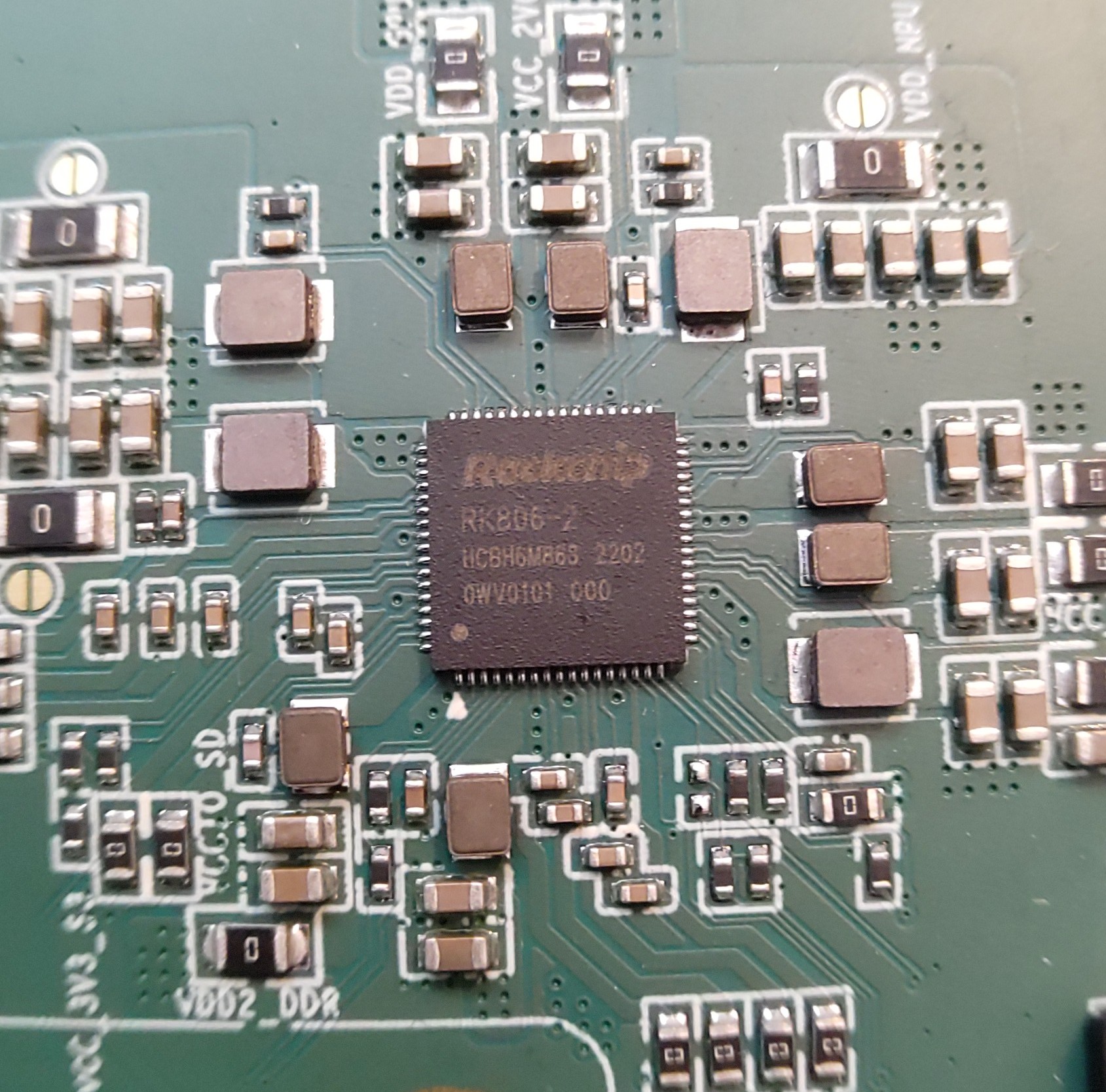Difference between revisions of "QuartzPro64 Development"
m (→UART: remove useless grep option) |
m (→Kernel: add "(SRE)" reference) |
||
| Line 455: | Line 455: | ||
* [https://patchwork.kernel.org/project/linux-rockchip/list/ linux-rockchip patchwork] | * [https://patchwork.kernel.org/project/linux-rockchip/list/ linux-rockchip patchwork] | ||
* [https://github.com/neg2led/linux-quartz64 neg2led's mainline kernel repository with patches picked from the mailing list] | * [https://github.com/neg2led/linux-quartz64 neg2led's mainline kernel repository with patches picked from the mailing list] | ||
* [https://git.kernel.org/pub/scm/linux/kernel/git/sre/linux-misc.git/log/?h=rk3588 Sebastian Reichel's rk3588 branch] | * [https://git.kernel.org/pub/scm/linux/kernel/git/sre/linux-misc.git/log/?h=rk3588 Sebastian Reichel's (SRE) rk3588 branch] | ||
== Misc == | == Misc == | ||
Revision as of 16:40, 13 December 2022
A QuartzPro64 Development Wiki page before a QuartzPro64 Wiki page? It's more likely than you think!
This page will be used for both documenting the current development efforts and the board in general, as we don't know yet how a generally available QuartzPro64 will look like so documenting the dev board is probably best left to the development page.
Obtaining a Development Board
Request/Register: https://preorder.pine64.org/#/quartzpro64
Upstreaming Status
| Function | Status | Component | Notes | |
|---|---|---|---|---|
| Video Output | Needs porting | VOP2
|
Collabora said they'll work on this. The video output IP on the RK3588 should mostly be the same as the one on the RK356x, but the chip specific stuff will need to be integrated into the vop2 driver. | |
| Video Input | Needs porting | rk_hdmirx
|
Huge 3600 line driver, but generally seems to be in good condition | |
| 3D Acceleration | Needs writing | Needs writing | panfrost
|
Collabora said they'll work on this. New architecture, reportedly needs many changes to the kernel component of Panfrost. |
| Video Decode | Needs writing | GStreamer only, no ffmpeg[1] | hantro using v4l2-requests
|
VDPU121 handling 1080p60 H.263/MPEG-4, MPEG-1 and MPEG-2 |
| Needs writing | rkvdec2 using v4l2-requests
|
Nobody is known to be working on this for now. VDPU346 handling 8K60 H.265, H.264, VP9 and AVS | ||
| Needs writing | rkdjpeg using v4l2-requests
|
User:CounterPillow is doing a little work on this. VDPU720 handling JPEG | ||
| Needs writing | ? using v4l2-requests
|
Collabora said they'll work on this. VDPU981 handling 4K60 AV1 | ||
| Video Encode | Needs writing | GStreamer only | JPEG on VEPU121 | Driver already exists, only minor changes needed. |
| Needs writing | ? | H.264 on VEPU580 | ||
| Needs writing | ? | H.265 on VEPU580 | ||
| Audio | In review[2] | rockchip-i2s-tdm
|
||
| Linux Mainline | es8388 CODEC
|
|||
| CRU | In review[3] | clk-rk3588
|
||
| MMC | Linux Mainline | sdhci-of-dwcmshc
|
As of 5.19[4] | |
| pinctrl | Linux Mainline | pinctrl-rockchip
|
As of 5.19[5] | |
| GPIO | Linux Mainline | rockchip-gpio
|
As of 6.1[6] | |
| I2C | Linux Mainline | rk3x-i2c
|
Should be the same as RK3399, just needs devicetree work | |
| SPI | Linux Mainline | rockchip-spi
|
Should be the same as previous SoCs, just needs devicetree work | |
| PMU | In review[7] | rk806
|
Talks over SPI | |
| Regulators | Needs porting | rk860
|
Talks over I2C | |
| GMAC | Linux Mainline | dwmac-rk
|
As of 6.1[8] | |
| Power Domains | Linux Mainline | rockchip-pm-domain
|
As of 6.1[9] | |
| CAN | Needs porting | rockchip_canfd
|
Not broken out on the QuartzPro64, so we probably won't be the ones porting it | |
| SPDIF TX | May need porting | rockchip-spdif
|
Genuinely just needs the compatible string added, I think, otherwise we're all good. Not broken out on QuartzPro64 dev board | |
| SPDIF RX | Needs porting | rockchip-spdifrx
|
Not broken out on QuartzPro64 dev board | |
| PCIe | May need porting | rockchip-dw-pcie
|
Downstream driver and upstream are quite different, look into how much work actually needs doing. Seems to be the same controller as rk3568 so maybe none? | |
| NPU | Needs porting/writing | ? | rockchip-rknpu
| |
| USB 2.0 | ? | ?
|
||
| USB 3.0 | ? | ?
|
||
| SATA | Linux Mainline | ahci-dwc
|
Just needs the compatible added to the bindings | |
| Thermal | In review[10] | rockchip-thermal
|
||
Hardware
General
- RK3588 SoC
- 16 GB SK hynix DRAM
Cooler
The board comes with two cooler mounts, a 4-hole mount that appears to be spaced 55x55mm apart, and the ~60mm diagonal "northbridge heatsink" mount the ROCKPro64 and Quartz64 Model A uses.
RK3588 is slightly (<1mm?) taller than the DRAM chips, use a thick enough thermal pad instead of thermal compound.
UART
Plug in the USB-C port labelled "DEBUG PORT" on the QP64 board to another computer with a USB-A-to-C cable.
It will show up as a FT232 USB Serial adapter in lsusb:
$ lsusb [...] Bus 005 Device 027: ID 0403:6001 Future Technology Devices International, Ltd FT232 Serial (UART) IC [...]
Baud rate is 1.5 mbauds or 1500000.
Ensure you have the driver module loaded:
# modprobe ftdi_sio # lsmod | grep ftdi_sio ftdi_sio 61440 0 usbserial 53248 1 ftdi_sio usbcore 290816 7 ftdi_sio,usbserial,xhci_hcd,usbhid,usbkbd,usbmouse,xhci_pci
If the above is not working, check the required driver is supported by your kernel, using one of the following commands:
$ zgrep FTDI_SIO /proc/config.gz CONFIG_USB_SERIAL_FTDI_SIO=m $ grep FTDI_SIO "/boot/config-$(uname -r)" CONFIG_USB_SERIAL_FTDI_SIO=m
Using the dmesg command, you should see something like the following:
[24784.535804] usb 5-3: new full-speed USB device number 3 using xhci_hcd [24784.710714] usb 5-3: New USB device found, idVendor=0403, idProduct=6001, bcdDevice= 6.00 [24784.710723] usb 5-3: New USB device strings: Mfr=1, Product=2, SerialNumber=3 [24784.710725] usb 5-3: Product: FT232R USB UART [24784.710727] usb 5-3: Manufacturer: FTDI [24784.710728] usb 5-3: SerialNumber: A10LLO86 [24784.723858] usbcore: registered new interface driver usbserial_generic [24784.723865] usbserial: USB Serial support registered for generic [24784.725286] usbcore: registered new interface driver ftdi_sio [24784.725295] usbserial: USB Serial support registered for FTDI USB Serial Device [24784.725348] ftdi_sio 5-3:1.0: FTDI USB Serial Device converter detected [24784.725368] usb 5-3: Detected FT232RL [24784.731685] usb 5-3: FTDI USB Serial Device converter now attached to ttyUSB0
Then you can get console output from the QP64 with, for example:
screen /dev/ttyUSB0 1500000
Mounting Holes
Can't be bothered to take a precise measurement of all the holes right now, just use some PC standoffs and have the board sit on your desk, it's a dev board after all.
See the PCB layout PDF files, linked in the Documentation section.
Storage
- Soldered on 64 GB FORESEE eMMC chip, it comes pre-flashed with some Android (you'll even get a brief bit of HDMI output)
- microSD card slot
- 2x SATA 3.0 (molex power connector for it not populated, but easy to remedy)
Power
You can provide power to the board via the 12V barrel connector, it's 5.5mm OD/2.1mm ID barrel 'coaxial' type "M" centre-positive, the ROCKPro64 5A power supply from the PINE64 store will work. (TODO: add alternative ways).
There is a hardware flip switch to power up / down the board.
PMU
2x RK806-2, not RK808 compatible. It's a dual PMU configuration where one PMU is a subordinate of the other.
Verify this once we have access to SDK sources.
This may be it, TODO: test it & report.
Ethernet
The RGMII ethernet port (near the SDCARD socket) is working if you use neg2led's linux-quartz64 repo.
The other port (near the sound jack) is hooked to the SoC via PCIe and is currently not working.
Boot
The board can boot from the following interfaces:
- SPI
- eMMC
- SD/MMC
TODO: in which priority / order are those boot options tried ?
TODO: Add brickability informations
Immediate TODOs
Enable cpufreq Stuff
Current neggles kernel has the CPU at 1.2 GHz, apparently sre has patches to enable cpufreq?
Add RK3588 Support To VOP2
VOP2 IP on the RK3588 is very similar to the one on the RK356x, but it still needs platform specific code added.
Ways To Do Things
Using rkdeveloptool
Use the PINE64 fork of rkdeveloptool.
Connect a USB-C cable to the "DEBUG PORT" USB-C port, and a second to the "DOWNLOAD" USB-C port. Cable direction for the latter matters, so if it doesn't show up after entering download mode, try rotating the USB-C connector to the other side!
Interrupt the boot by mashing Ctrl+C very quickly on the serial comms, then type download to enter rockusb download mode.
$ rkdeveloptool list
should now show you the device somewhat like this:
$ rkdeveloptool list DevNo=1 Vid=0x2207,Pid=0x350b,LocationID=204 Loader
/etc/udev/rules.d/ and udevadm control --reloadNow, we can e.g. show the partitions on the eMMC:
$ rkdeveloptool list-partitions # LBA start (sectors) LBA end (sectors) Size (bytes) Name 00 8192 16383 4194304 security 01 16384 24575 4194304 uboot 02 24576 32767 4194304 trust 03 32768 40959 4194304 misc 04 40960 49151 4194304 dtbo 05 49152 51199 1048576 vbmeta 06 51200 133119 41943040 boot 07 133120 329727 100663296 recovery 08 329728 1116159 402653184 backup 09 1116160 1902591 402653184 cache 10 1902592 1935359 16777216 metadata 11 1935360 1937407 1048576 baseparameter 12 1937408 8310783 3263168512 super 13 8310784 120831935 57610829824 userdata
You can now use rkdeveloptool write-partition partitionname yourfile to overwrite one of the eMMC partitions.
U-Boot + Kernel On SD, RootFS On eMMC
This is the setup User:CounterPillow currently uses. In short, you'll need a vendor U-Boot on your SD card, with a boot partition on it that contains your extlinux.conf, device tree and kernel.
Setting Up The SD Card
Assuming your SD card is /dev/sdX, partition as e.g. follows:
# parted -s /dev/sdX mklabel gpt # parted -s /dev/sdX mkpart loader 64s 8MiB # parted -s /dev/sdX mkpart uboot 8MiB 16MiB # parted -s /dev/sdX mkpart env 16MiB 32MiB # parted -s /dev/sdX mkpart efi fat32 32MiB 544MiB # increase size as you wish # parted -s /dev/sdX set 4 boot on
Flash SPL and u-boot:
# dd if=rk3588_spl_loader_v1.06.109.bin of=/dev/sdX1 # dd if=uboot.img of=/dev/sdX2
Then make the filesystem:
# mkfs.vfat -n "efi" /dev/sdX4
Mount it to e.g. /mnt/sdcardboot:
# mount /dev/sda4 /mnt/sdcardboot
Put the following in /mnt/sdcardboot/extlinux/extlinux.conf:
default l0 menu title QuartzPro64 Boot Menu prompt 0 timeout 50 label l0 menu label Boot Jank Kernel SDMMC linux /jank fdt /dtbs/rockchip/rk3588-evb1-v10.dtb append earlycon=uart8250,mmio32,0xfeb50000 console=ttyS2,1500000n8 root=/dev/mmcblk0p14 rw rootwait
Copy your kernel to /mnt/sdcardboot/jank and your DTB to /mnt/sdcardboot/dtbs/rockchip/rk3588-evb1-v10.dtb.
Unmount it, we're done with the SD card.
Creating The Root File System
First, allocate a file the size of your desired root partition (larger sizes will take longer to transfer, don't make the same mistakes as CounterPillow did), here we choose 16G:
$ fallocate -l 16G rootpart.bin
then, make the filesystem on it. CounterPillow went for ext4 because nobody has ever been fired for using ext4:
$ mkfs.ext4 rootpart.bin
Cool, now mount it:
# mount rootpart.bin /mnt/emmc-root
Now we'll download the Arch Linux ARM generic rootfs tarball and go to town:
$ wget -N http://os.archlinuxarm.org/os/ArchLinuxARM-aarch64-latest.tar.gz{,.sig} $ curl 'https://keyserver.ubuntu.com/pks/lookup?op=get&search=0x68b3537f39a313b3e574d06777193f152bdbe6a6' | gpg --import=- # in case you're lacking the key $ gpg --verify ArchLinuxARM-aarch64-latest.tar.gz.sig # don't you dare skip this # bsdtar -xpf ArchLinuxARM-aarch64-latest.tar.gz -C /mnt/emmc-root # notice that this is run as root
Then we just need to edit fstab. Get the UUID (not PARTUUID) from lsblk:
$ lsblk -o NAME,SIZE,MOUNTPOINTS,UUID
and put it in /mnt/emmc-root/etc/fstab as follows:
UUID=root-uuid-here / ext4 defaults 0 1
Unmount /mnt/emmc-root, we're done with it.
Flashing The Root File System With RockUSB
Plug one USB-C cable into the debug UART port, the other into the download port. Yes you will need two USB-C cables (or A-to-C cables) for this, get over it.
Plug in your board, reset it while hammering Ctrl+c on the debug UART until you get into a u-boot command line. Now enter the download command.
If your device doesn't show up in lsusb or rkdeveloptool list command, pull out the download USB-C plug, rotate it axially by 180 Euler degrees, and plug it back in.
Next, flash the partition. Depending on the size of it, this can take over an hour:
$ rkdeveloptool write-partition userdata rootpart.bin
Booting
Unplug the download USB-C cable once done.
Put the SD card in the board. Reset it. You can now boot and your rootfs on eMMC will be mounted and contains an ALARM userland.
To update kernels or the device tree, just shut down the board, take out the SD card, write a new kernel or dtb to it, and plug it back in. No more need for rkdeveloptool, yay.
Using neg2led's kernel branch
If you use the linux-quartz64 branch from neg2led's kernel fork (see Resources for a link). The uSD card reader is working and you can use a partition on it for the root FS. This will eliminate the need to use rkdeveloptool.
Create the additionnal partition:
# parted -s /dev/sdX mkpart root ext4 544MiB 4GiB
Mount it:
# mount /dev/sda4 /mnt/sdcardroot
Extract the ALARM rootfs tarball in there:
# bsdtar -xpf ArchLinuxARM-aarch64-latest.tar.gz -C /mnt/sdcardroot # notice that this is run as root
Find the right device your SD card will be (by booting neg2led's kernel once and looking at the boot log). Then modify "root=" from extlinux/extlinux.conf, for example:
root=/dev/mmcblk1p5
Resources
Kernel
- The linux-rockchip mailing list archives
- linux-rockchip patchwork
- neg2led's mainline kernel repository with patches picked from the mailing list
- Sebastian Reichel's (SRE) rk3588 branch
Misc
- The quartz64 and quartz-dev channels on the PINE64 chats (bridged IRC, Matrix, Discord and Telegram)
- PINE64 rkdeveloptool fork
- CounterPillow's uboot-qp64 repository, used with the official rkbin repository
Documentation
The various documents relating to the chips and board haven't been publicly released yet, but if you do have a QuartzPro64 board User:CounterPillow will happily provide the documentation for you if you ask him in the PINE64 chats. We have the following:
- RK3588 TRM Part 1 and Part 2
- RK860 datasheet including register descriptions
- RK806 datasheet including register descriptions
- RK3588 hardware design guide, machine translated to English from Chinese, and the original Chinese copy
- QuartzPro64 schematics
- QuartzPro64 PCB top layout
- QuartzPro64 PCB bottom layout
